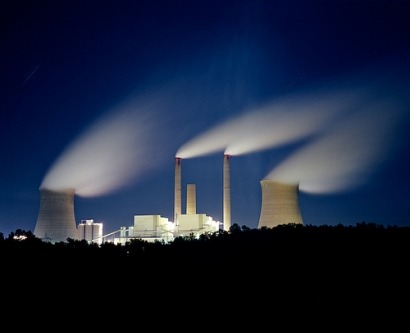
Global emissions of carbon dioxide – the main cause of global warming – increased by 45 % between 1990 and 2010, and reached an all-time high of 33 billion tonnes in 2010. The authors of the report concluded that “increased energy efficiency, nuclear energy and the growing contribution of renewable energy are not compensating for the globally increasing demand for power and transport, which is strongest in developing countries”.
This increase took place despite emission reductions in industrialised countries during the same period. Even though different countries show widely variable emission trends, industrialised countries are likely to meet the collective Kyoto target of a 5.2 % reduction of greenhouse gas emissions by 2012 as a group, partly thanks to large emission reductions from economies in transition in the early nineties and more recent reductions due to the 2008-2009 recession.
The report, which is based on recent results from the Emissions Database for Global Atmospheric Research (EDGAR) and latest statistics for energy use and other activities, shows large national differences between industrialised countries. Over the period 1990-2010, in the EU-27 and Russia carbon dioxide emissions decreased by 7% and 28% respectively, while the USA’s emissions increased by 5% and the Japanese emissions remained more or less constant.
The industrialised countries that have ratified the Kyoto Protocol (so called ‘ratifying Annex 1 countries’) and the USA, in 1990 caused about two-thirds of global carbon dioxide emissions. Their share of global emissions has now fallen to less than half the global total.
Economic recovery = higher emissions
Continued growth in the developing countries and emerging economies and economic recovery by the industrialised countries are the main reasons for a record breaking 5.8% increase in global carbon dioxide emissions between 2009 and 2010. Most major economies contributed to this increase, led by China, USA, India and EU-27 with increases of 10%, 4%, 9% and 3% respectively.
The increase is significant even when compared to 2008, when global carbon dioxide emissions were at their highest before the global financial crisis. It can be noted that in EU-27, carbon dioxide emissions remain lower in absolute terms than they were before the crisis (4.0 billion tonnes in 2010 as compared to 4.2 billion tonnes in 2007).
At present, the USA emits 16.9 tonnes carbon dioxide per capita per year, over twice as much as the EU-27 with 8.1 tonnes. By comparison, Chinese per capita carbon dioxide emissions of 6.8 tonnes are still below the EU-27 average, but now equal those of Italy. It should be noted that the average figures for China and EU-27 hide significant regional differences.
Fossil fuel addiction still to blame
Long term global growth in carbon dioxide emissions continues to be driven by power generation and road transport, both in industrial and developing countries. Globally, they account for about 40% and 15% respectively of the current total and both have consistent long-term annual growth rates of between 2.5% and 5%.
Throughout the Kyoto Protocol period, industrialised countries have made efforts to change their energy sources mix. Between 1990 and 2010 they reduced their dependence on coal (from 25% to 20% of total energy production) and oil (from 38% to 36.5%), and shifted towards natural gas (which increased from 23% to 27 %), nuclear energy (from 8% to 9%) and renewable energy (from 6.5% to 8%). In addition they made progress in energy savings, for example by insulation of buildings, more energy-efficient end-use devices and higher fuel efficiencies.
The report shows that the current efforts to change the mix of energy sources cannot yet compensate for the ever increasing global demand for power and transport. “This needs to be considered in future years in all efforts to mitigate the growth of global greenhouse gas emissions, as desired by the UN Framework Convention on Climate Change, the Bali Action Plan and the Cancún agreements,” says the JRC.
[Photo: Courtesy of Force Change]
For additional information:

